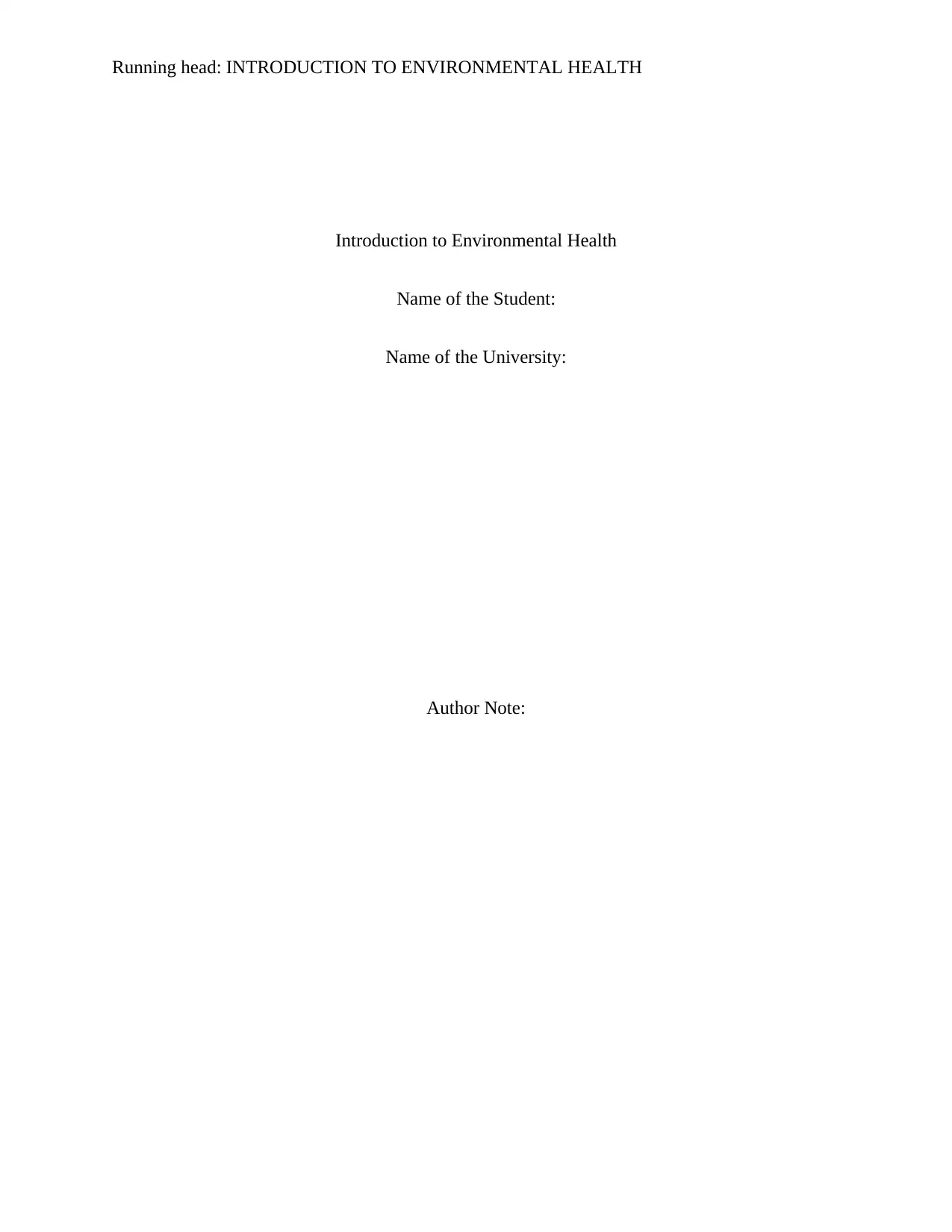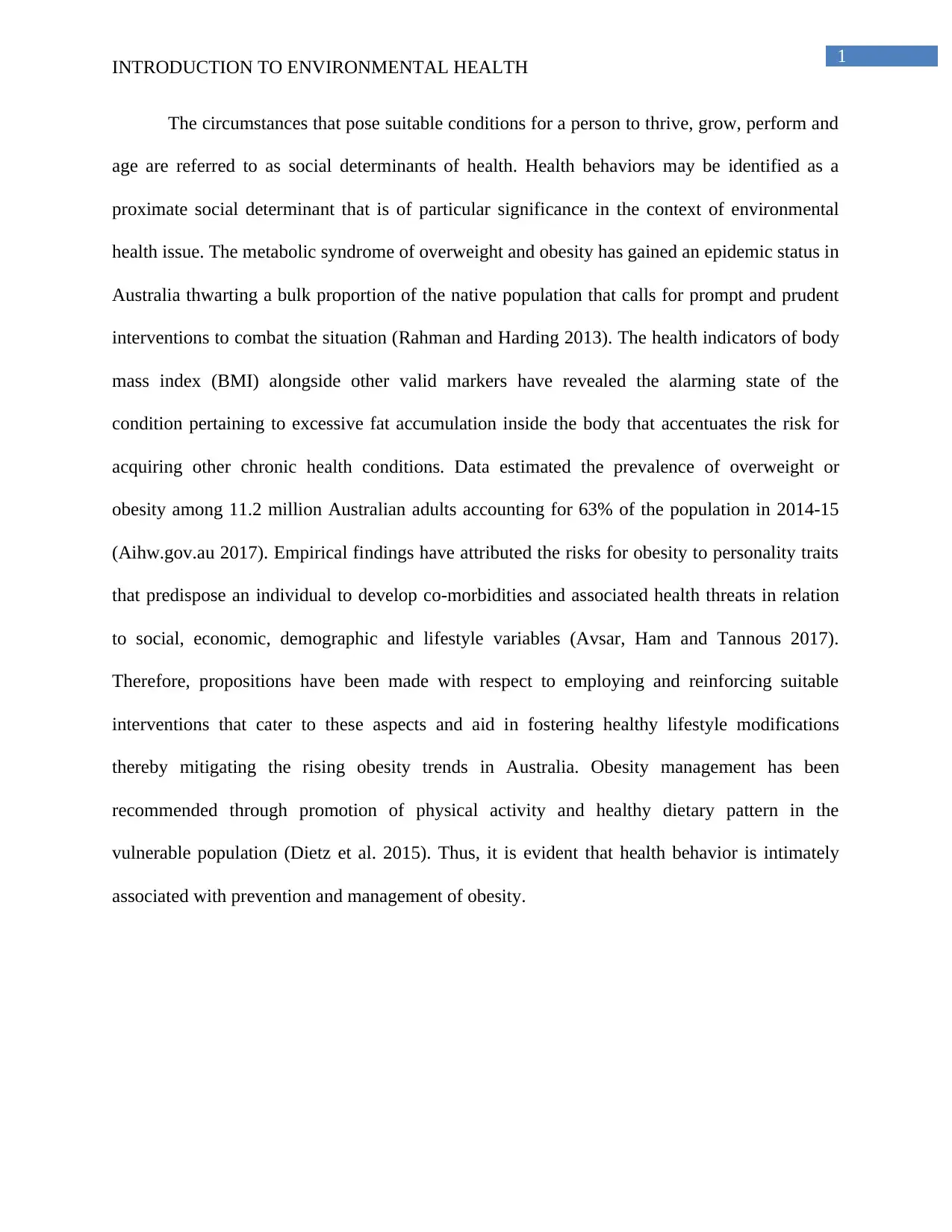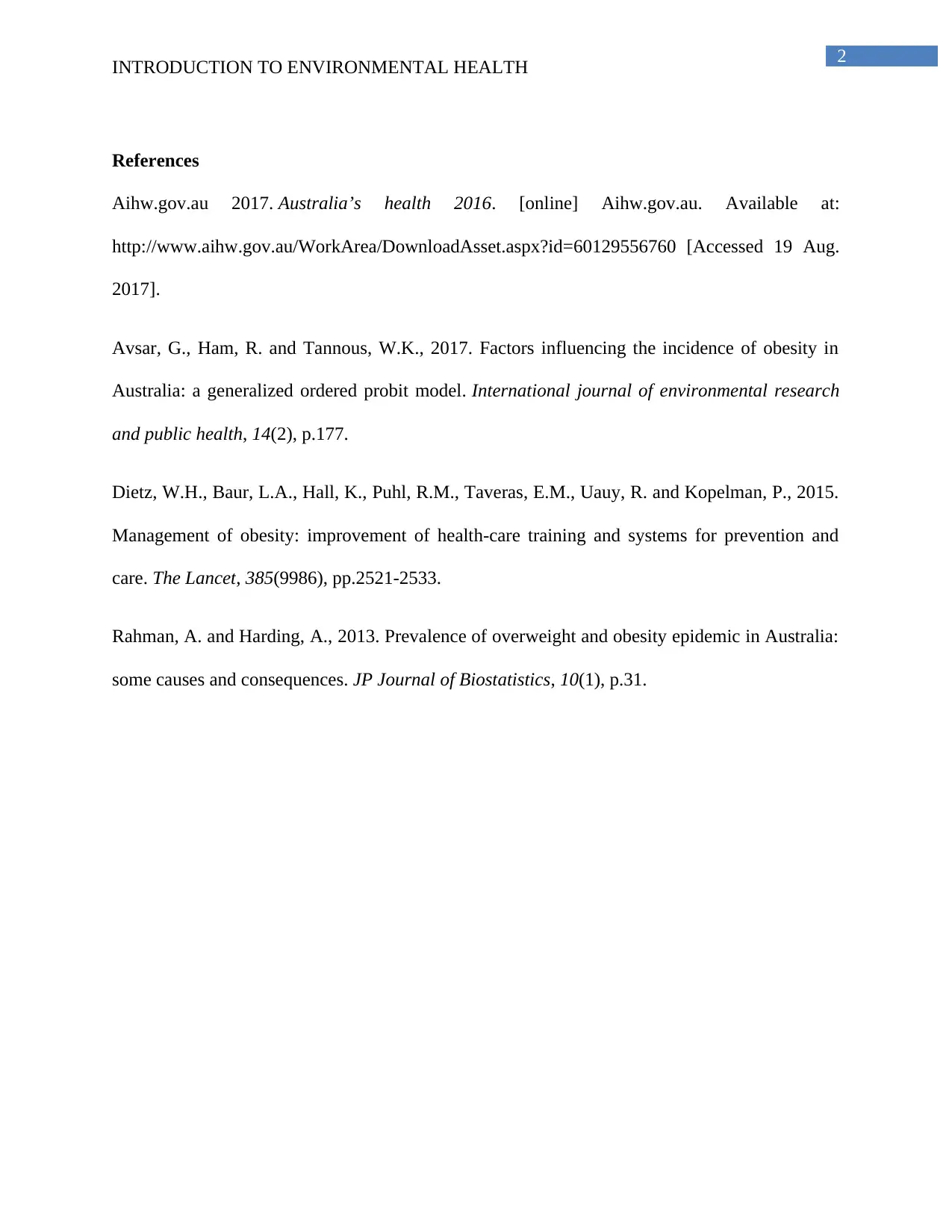Environmental Health Report on Obesity in Australia
VerifiedAdded on 2020/03/02
|3
|473
|40
Report
AI Summary
This report examines the environmental health implications of obesity in Australia. It begins by highlighting the prevalence of obesity, referencing statistical data that underscores the severity of the issue. The report then delves into the causes of obesity, including factors such as lifestyle choices, genetic predispositions, and societal influences. It also addresses the health consequences of obesity and discusses potential solutions. These solutions include strategies for weight management, such as lifestyle modifications, dietary changes, and public health interventions. The report emphasizes the importance of addressing this health crisis and highlights the need for proactive measures to combat the growing prevalence of obesity in Australia. The report draws upon existing research and provides a comprehensive overview of the current state of obesity and its impact on public health.
1 out of 3










![[object Object]](/_next/static/media/star-bottom.7253800d.svg)